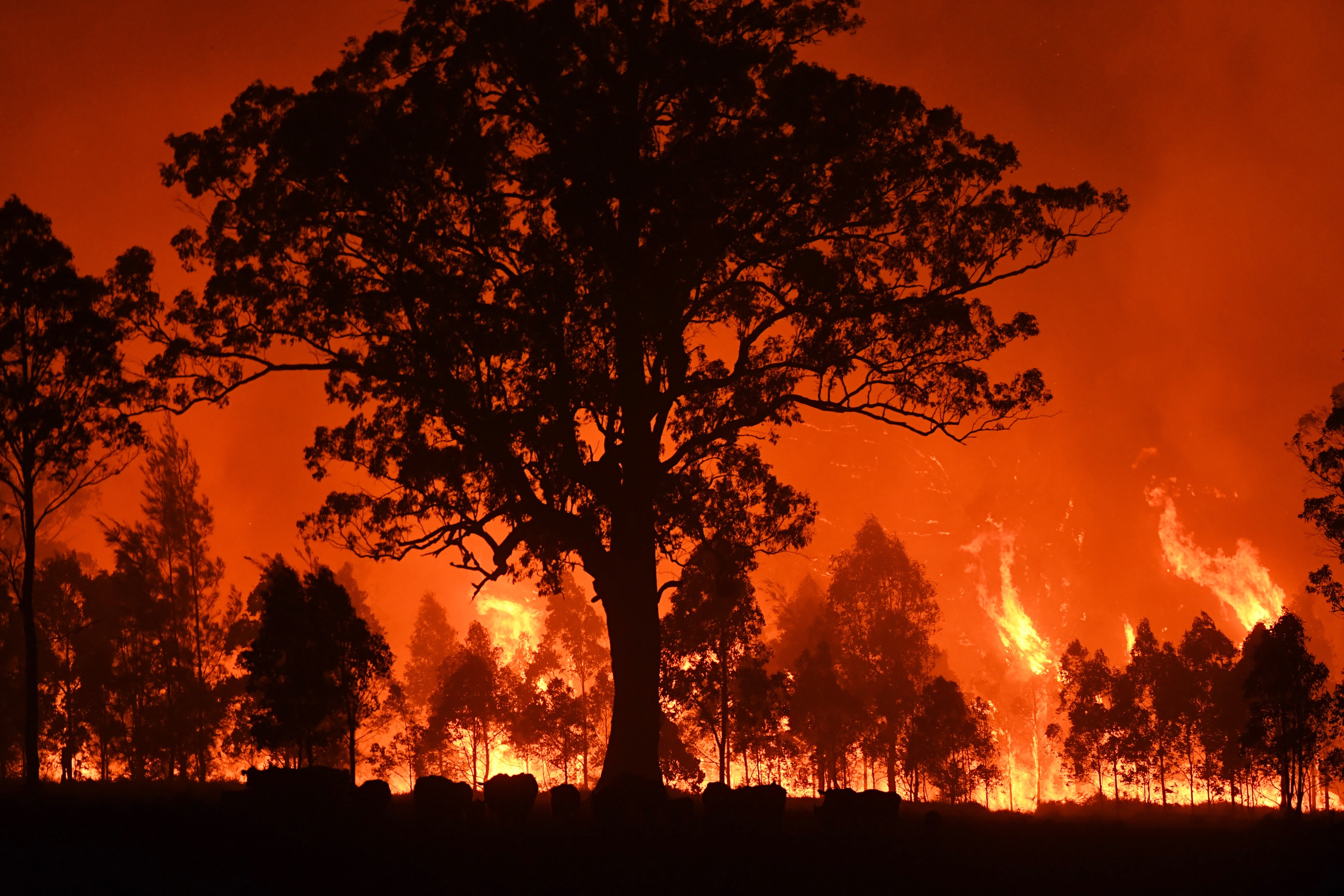Introducing the Risks: Why Every Homeowner Needs a Bushfire Risk Assessment
Introducing the Risks: Why Every Homeowner Needs a Bushfire Risk Assessment
Blog Article
Crucial Tips for Bushfire Management to Guarantee Fire Security

Comprehending Bushfire Risk Levels
Understanding the differing levels of bushfire danger is important for reliable preparation and preparation in mitigating potential dangers to lives and buildings. Bushfire risk degrees are generally classified based on aspects such as weather, gas accessibility, topography, and historic fire behavior. By comprehending these risk degrees, people and communities can proactively implement techniques to reduce vulnerability and enhance durability when faced with prospective bushfire occasions.
The initial level of bushfire danger is reduced danger, where the chance of a bushfire happening and creating substantial harm is marginal. This degree frequently takes place throughout durations of reduced temperature levels, modest moisture, and minimal wind rates. Moderate risk levels indicate a raised possibility for bushfires due to escalating weather or fuel accessibility. Risky levels represent a substantial threat, with conditions for quick fire spread and severe fire behavior. Extreme risk levels are the most crucial, posturing unavoidable threat to lives and homes as a result of extreme weather and very combustible gas.
Recognizing these bushfire danger levels makes it possible for stakeholders to customize their readiness and feedback actions accordingly, guaranteeing a effective and proactive approach to bushfire management.
Establishing a Defensible Space
Reliable bushfire administration starts with establishing a defensible space around residential or commercial properties to enhance protection versus potential fire risks. A defensible space is a barrier area that develops an obstacle between a framework and the bordering flammable plant life. This area acts as an important line of defense, providing firemens a safe location to run and assisting to lower the risk of a fire spreading out to the home.
When creating a defensible room, it is important to think about the format of the residential or commercial property and the bordering landscape. Clearing plant life, especially extremely combustible plants, within a specific span of the property can help avoid the quick spread of fires. In addition, maintaining a well-irrigated zone around the building can further improve its defensibility.
Routine maintenance of the defensible space is critical to ensure its effectiveness. This includes cutting overhanging branches, removing dead greenery, and keeping the area devoid of debris. By spending time and initiative right into creating and keeping a defensible space, building owners can dramatically boost their chances of shielding their homes and properties throughout a bushfire.
Implementing Fire-Resistant Landscape Design
When developing landscapes to mitigate the threat of bushfires, incorporating fireproof aspects is essential for boosting residential or commercial property security and decreasing fire hazards. Select plants with high dampness web content, reduced oil material, and marginal dead plant life to lower the risk of fire spread.

Developing an Emergency Emptying Strategy
Establishing an extensive emergency situation discharge plan is essential for ensuring the safety and health Bushfire Management Plan of people during potential bushfire occurrences (BMP). A reliable emptying strategy should describe clear treatments to adhere to in case of a bushfire hazard, including assigned emptying courses, assembly factors, and communication protocols
To start producing an emergency situation emptying plan, it is important to examine the details threats and vulnerabilities of your location. Identify several evacuation courses that lead to risk-free locations away from the fire, considering variables such as terrain, roadway availability, and possible threats. Develop communication channels to alert homeowners of an approaching evacuation, making use of methods such as alarms, text signals, or door-to-door notices.
On a regular basis review and practice the evacuation strategy with all citizens or neighborhood members to make sure every person recognizes their roles and duties. Conduct drills to evaluate the performance of the plan and make any kind of needed modifications. By having a well-prepared discharge strategy in position, you can boost the possibilities of a safe and orderly discharge during a bushfire emergency.
Preserving Fire Safety And Security Tools
After developing a comprehensive emergency evacuation prepare for bushfire cases, it is crucial to prioritize the normal maintenance of fire safety and security devices to guarantee optimum performance and preparedness. Routine upkeep of fire security tools such as fire extinguishers, smoke detectors, fire alarm systems, and lawn sprinkler is important in safeguarding lives and home throughout a bushfire. When needed., carrying out regular evaluations, screening, and maintenance of these gadgets by certified professionals is crucial to ensure they are in working order.
Fire extinguishers ought to be inspected regularly for pressure degrees, noticeable damages, and correct capability. By diligently keeping fire safety and security equipment, individuals can enhance their preparedness and response capabilities in the event of a bushfire.
Verdict
To conclude, reliable bushfire management includes comprehending risk degrees, producing defensible spaces, applying fireproof landscaping, creating emptying plans, and keeping fire safety and security devices. By following these essential suggestions, people can ensure far better fire security and security for their homes and neighborhoods. It is essential to prioritize proactive measures to alleviate the risks connected with bushfires and to be gotten ready for emergency situations.
By comprehending the subtleties of bushfire risk levels, creating defensible spaces, applying fire-resistant landscape design, creating thorough evacuation plans, and making certain the maintenance of fire safety and security devices, communities and people can dramatically strengthen their durability against the devastations of wildfires - BAL Assessment. These tips are not just vital for safeguarding against immediate fire risks however likewise for cultivating lasting fire protection techniques that can make a considerable distinction in the face of escalating bushfire risks
High-risk degrees indicate a substantial threat, with conditions favorable to quick fire spread and severe fire behavior. Regular maintenance of fire security tools such as fire extinguishers, smoke detectors, fire alarms, and sprinkler systems is crucial in safeguarding lives and residential property throughout a bushfire.In conclusion, effective bushfire administration includes comprehending threat degrees, producing defensible areas, applying fireproof landscape design, creating discharge plans, and maintaining fire security tools.
Report this page